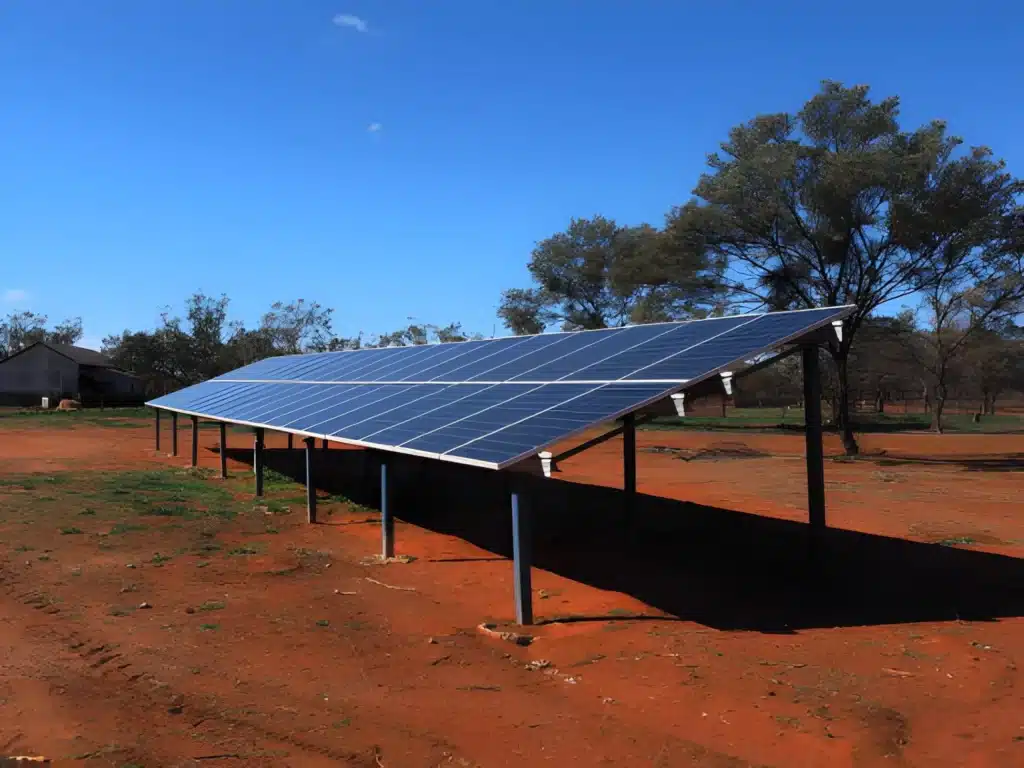You can buy a solar system for $2,000 or $20,000, and they might look similar on paper. But high quality off-grid solar systems use superior components, better engineering, and more thoughtful design that shows up when you need reliability most. The differences become obvious during your first extended cloudy period or when a component fails at 2 AM on a winter night.
Component Grade and Manufacturing Standards
Premium systems use Tier 1 solar panels manufactured by companies like SunPower, LG, or Panasonic. These panels undergo more rigorous testing and quality control. While cheaper panels might pass basic certification tests, premium panels are tested for 4,000 hours of UV exposure, 1,000 hours of damp heat testing, and 50 thermal cycles compared to minimum requirements of 2,000, 1,000, and 200 respectively.
The difference shows up in real-world degradation rates. Cheap panels often degrade 0.8-1.0% annually, while premium panels maintain their output with only 0.25-0.4% annual degradation. Over 20 years, this means cheap 400W panels might only produce 320W while premium panels still deliver 380W.
Battery cells make an even bigger difference. High-quality systems use Grade A lithium cells with matched capacity and internal resistance. Budget systems often use Grade B or mixed-grade cells that create imbalances, reducing overall pack life by 40-60%.
Electrical Protection and Safety Systems
Quality systems include multiple layers of protection that budget systems skip to cut costs. DC fuses or circuit breakers protect each string of panels. AC and DC surge protectors guard against lightning and utility grid transients. Ground fault detection shuts down the system if insulation fails, preventing fires.
Battery management systems (BMS) in premium systems monitor individual cell voltages, temperatures, and current flows. Basic systems might only check overall pack voltage. This detailed monitoring prevents thermal runaway, balances cell charging, and can identify failing cells before they damage the entire battery pack.
Arc fault detection is becoming standard in quality installations. These devices detect the electrical arcing that causes many solar fires and automatically shut down the system within milliseconds. Budget systems rarely include this safety feature.
Engineering Design and System Architecture
High-quality systems are engineered as complete solutions rather than collections of individual components. Power flows, thermal management, and electrical compatibility are optimized across the entire system.
Inverter topology makes a difference. Premium systems often use transformerless inverters with multiple MPPT inputs, allowing optimization of different panel orientations and shading conditions. Budget systems use single MPPT controllers that treat all panels as one string, reducing power harvest by 15-25% in typical installations.
Thermal management extends component life significantly. Quality charge controllers and inverters include temperature-controlled cooling fans and heat sinks sized for continuous operation at rated power. Budget units often throttle power output or shut down completely during hot weather.
Monitoring and Communication Capabilities
Premium systems include comprehensive monitoring that tracks every component’s performance. You can see individual panel output, battery cell voltages, inverter efficiency, and load consumption in real-time. This data helps optimize system performance and identify problems before they cause outages.
Predictive maintenance algorithms analyze performance trends and alert you to developing issues. If a charge controller starts running hotter than normal or battery capacity begins declining, you get advance warning to schedule maintenance.
Remote diagnostics allow technicians to troubleshoot problems without site visits. Many issues can be resolved through firmware updates or settings adjustments, reducing service costs and downtime.
Warranty Coverage and Support Quality
Quality manufacturers back their products with comprehensive warranties that cover parts, labor, and performance guarantees. Premium solar panels typically include 25-year performance warranties guaranteeing 80% of original output after 25 years.
More importantly, quality manufacturers provide responsive technical support. When you call with a problem, you reach knowledgeable technicians who can help diagnose issues and arrange warranty replacements quickly. Budget manufacturers often provide minimal support or require you to work through distributors who may not understand the technical details.
Long-term Value and Reliability
High-quality systems cost 40-60% more initially but often provide better value over their lifetime. Premium components last 20-25 years with minimal maintenance compared to 8-12 years for budget alternatives. When you factor in replacement costs and lost productivity from outages, quality systems usually cost less per kWh over their lifetime.
Reliability matters more in off-grid applications than grid-tie systems. If your grid-tie system fails, you still have utility power. When your off-grid system fails, you’re without electricity until repairs are completed. Quality systems reduce failure rates from 5-8% annually to less than 1%.
Read more: The Charm of Luxury Spa Gift Vouchers in Melbourne for Special Occasions – Spiritual Meaning Portal
How Expert Psychologists in Penrith Provide Guidance for a Better Life – Spiritual Meaning Portal
Unique Ideas for New Born Baby Gifts That Parents Will Treasure – Spiritual Meaning Portal







